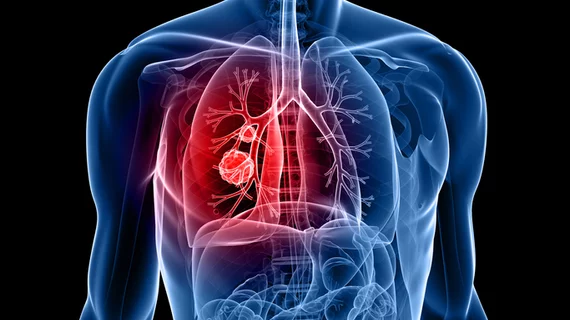Greater low-dose CT vigilance needed among head and neck cancer survivors, study asserts
Head and neck cancer survivors with a significant smoking history face a 2.5 times higher rate of lung cancer than others who never had the disease, according to a new analysis.
Imaging following treatment is typically used to pinpoint recurrences of the initial cancer or any second-primary cases that may have developed. However, there is little data on the handling of surveillance for head and neck cancer survivors beyond six months, with some recommending ending routine monitoring after the half-year mark.
Researchers sought to explore this topic, utilizing secondary data from the National Lung Screening Trial. Their findings—published Oct. 28 in JAMA Otolaryngology–Head & Neck Surgery—demonstrate the need to carefully monitor this patient population.
“Adherence to lung cancer screening recommendations in the real world is low, and our results underscore the importance of lung cancer screening in [head and neck cancer] survivors,” John Cramer, MD, with Wayne State University School of Medicine’s Department of Otolaryngology, and colleagues concluded. “In total, these results support routine annual low-dose CT chest screening for lung cancer in HNC survivors with prior significant tobacco use who are fit enough to undergo treatment with curative intent.”
Cramer et al. identified their study cohort via a secondary analysis of data from the noted randomized trial, which enrolled participants between 2002-2004. Out of more than 53,000, they found 171 survivors of head and neck cancer. Of those, 89 were screened using chest X-ray while the other 82 received low-dose CT scans. Lung cancer rates were higher among HNC survivors (2.1%) when compared to trial participants who never had the disease (0.6%). Overall survival was 7.07 years for HNC survivors imaged with CT versus 6.66 years in the X-ray group.
“Lung cancer screening guidelines in this population need to be carefully considered within the context of surveillance practices,” Sean Massa, MD, with Saint Louis University Hospital’s Department of Otolaryngology, and colleagues wrote in a corresponding editorial. “Even without changing screening guidelines, clinicians who treat patients with HNC have tools to reduce patients’ risk of lung cancer mortality. The current study adds urgency to these efforts.”

